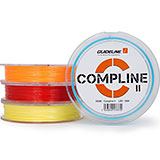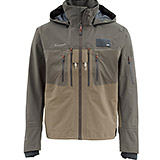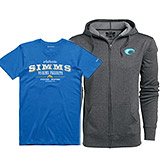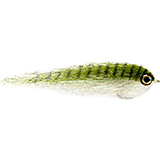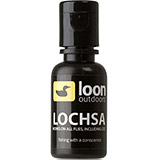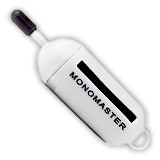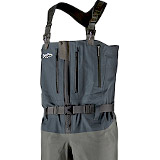Polarized sunglasses and fly fishing

Polarised glasses are part of the standard equipment for fly fishing. They not only protect your eyes from fly hooks and UV radiation, but also make it easier to see into the water. This makes spotting fish easier and helps you read the water. In this article we tell you how polarized glasses work and what you should consider when buying them.
„Look, see that trout over there? It’s feeding on small emergers below the surface”.
“What? Where? Can‘t see anything!“
Ok, admitted. A trained eye and some more experience are in most cases responsible for enabling the one to witness the feeding fish while another is unable to spot the big brown going crazy on emergers underneath the surface. However, in some cases it simply comes down to the fact that one of the two fishermen in the example is wearing polarized glasses that perfectly match the riverside scenario whereas the other fisherman is using conventional eye protection. This conventional eye protection is without doubt important. On the one hand glasses always offer protection against erred flies or streamers. On the other hand they screen out the aggressive short waved UVB-portion of the sunlight which especially in water-sports can lead to permanent damage. This is because the light reflected and scattered by the water surface has an intensity of up to 90% higher than direct sunlight.
What does polarization mean?
Polarized lenses are not inferior to ordinary sunglasses when it comes to UV-protection. All models on the market made by established manufacturers are certified and don’t just darken the vision. Though, polarized sunglasses can do more than that: They reduce or alleviate the scattered light that is e.g. reflected by the water surface. In result, eyes are not just less strained and less tired of adjusting to changing light conditions all the time, BUT the fisherman is also enabled to witness what’s going on under the surface. Thereby it doesn’t matter which scenario the fly fisher is facing. It may be a river, a lake or an extended sand flat in the Caribbean: Fish can simply be spotted more easily where conventional sunglasses fail to deliver! Not only are polarized glasses a huge aid when sight fishing but also to detect structures, ‚read the water‘ or make sure that the next step is safe when wading.
At this point you might ask how polarization works? Initially sunlight is not polarized. It’s freely moving in all directions. But as soon as the light hits a flat surface (e.g. water) it’s backscattered into a certain direction. This reflected light causes glare on the water surface, which is a big disturbance for the eye and hinders us to see through the water surface. A special filter built into polarized lenses, a thin film layer, disables the reflected light to pass the lenses and erases most of the glare from the water surface. This effect can either be present or absent. Intermediates in the effectiveness of polarization are impossible.
However - as in the case of conventional sunglasses - there are rather big differences in quality of lenses and frames between manufacturers. The polfilter in high quality polarized sunglasses e.g. show higher workmanship and hence adhere better to curved lenses. Furthermore, distortions along the edges of the lenses that can potentially lead to headache do not occur in quality lenses. And last but not least the good and most often costly lenses are more scratch resistant, robust and may even carry coatings that prevent fogging.

Brown lenses with a green mirror - all-rounder for many lighting conditions
Comfortable frame and a suitable shade
When purchasing polarized sunglasses you first of all should choose a frame fitting the size and shape of your head. Like ordinary glasses it should be comfy to wear over a long period. Sitting on your nose and ears it shouldn’t put any pressure on the sides of your head. Curved lenses and larger frames with solid coverage from light entering from the side (which would ruin the polarization effect) are appropriate. To the forehead should be enough space for moisture to steam of. It’s quite irritating to take of the glasses every few minutes just because it’s hot and you’re sweating or because it’s cold and the lenses get mist up on the inside just from your breath.
Once you have found a well fitting, airy frame with good coverage you can think about the shade of the lenses. An important question! Regarding physics each polarized lense has a basic tint of 50% gray. The additional shade has no influence on the polarization. But it determines how much light is absorbed. Therefor it’s clever to choose the shade of the lenses based up on the light conditions and type of water you are mostly fishing in. In low light surroundings when fishing on the river or during an evening hatch yellow glasses are first choice (about 25-30% light transmission). Yellow glasses support the depth perception and enhance contrast. Although most of them are mirrorless and don’t make you look like the coolest guy on the water … for most fly fishermen yellow glasses are the best option on running waters! And for everyone looking for a great look AND yellow lenses: Check out Costa's 'Sunrise Silver Mirror' models.
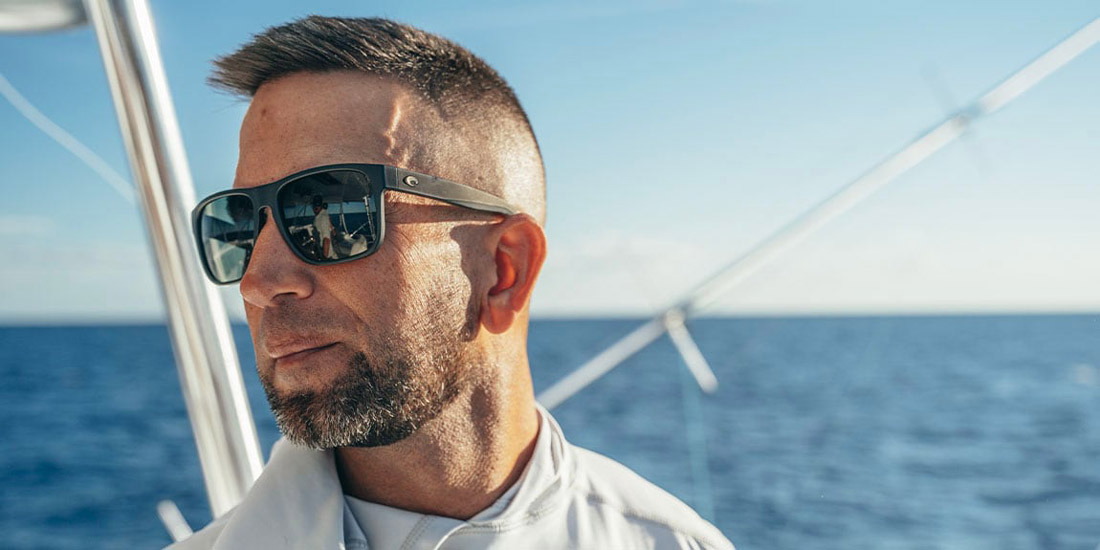
Grey lenses for fishing at sea and very bright light conditions
Variations of copper, bronze, light brown and amber are all-round shades (15-20% light transmission) and useful in a lot of scenarios. Because here the blue scattered radiation is filtered effectively too, contrasts are still strong.
Gray (10-15% light transmission) however is just a good choice on bright, sunny days and when contrast is not that important. Fishing on the lake or on the open sea is a total different thing! Here you have much more reflections and lights intensity is overall higher. Therefor gray makes much more sense in these conditions. To chase bonefish, permit and GT mirrored lenses with shades of blue, gold and green are just perfect.
What are photochromic lenses?
Thus it’s not just about a comfortable fit but also about the shade of your polarized sunglasses matching the light conditions and type of water. How great would it be having auto adjusting lenses with the perfect shade? Photochromic lenses are an answer to that wish!
These special lenses react on UV-radiation and change their tone automatically. More light let’s them change to a darker shade, is the UV-light reduced again they transform back. Responsible for this effect are chemical reactions on the lenses’ surface. A rule of thumb is: The higher the temperature, the slower the reaction. In the summer it therefor takes a bit longer until these glasses reach their maximum shade. With intense radiation and low temperatures the reaction runs much quicker. To darken completely the lenses need about one minute, to brighten up it takes double the time. Until they’ve reached the brightest level it can take up to 10 minutes. In low light conditions photochromic lenses absorb between 65 and 70% of the visible light. Within a bright surrounding the glasses filter up to 90%. Nevertheless, the harmful UV-radiation is blocked effectively all the time.

Spectacle wearer and polarized sunglasses
With photochromic lenses you are more flexible and in certain circumstances may even replace two glasses with different shades. Talking of flexibility: What about spectacle wearer and polarized sunglasses? It can be very annoying to switch from your ordinary glasses to contact lenses to use polarized glasses in the end. Also shaded clip-on lenses with a polfilter which were popular a few years ago are not the best solution anymore. Customized polarized sunglasses in your exact eyesight are of course nice to have, but can be very expensive. Besides, they are just useful as long as your eyesight doesn’t get worse. Hence a great alternative are so called fit-over polarized glasses (e.g. from Cocoon). Those are designed to securely and comfortably fit over a wide range of prescription eyewear frame sizes and shapes. Available with all kinds of shades and even with photochromic lenses these glasses are once bought and handled with care a reliable companion on the water for a very long time.
To take care for your new pair of polarized sunglasses you don't need much. Just lukewarm water, some hand soap or mild dish soap and a soft towel made from cotton or linen. You’ll have a clear sight into the water - and can watch that trout hunting emergers right under the surface.
You will find a large selection of polarized glasses and matching accessories in our shop. For every face and every budget!















